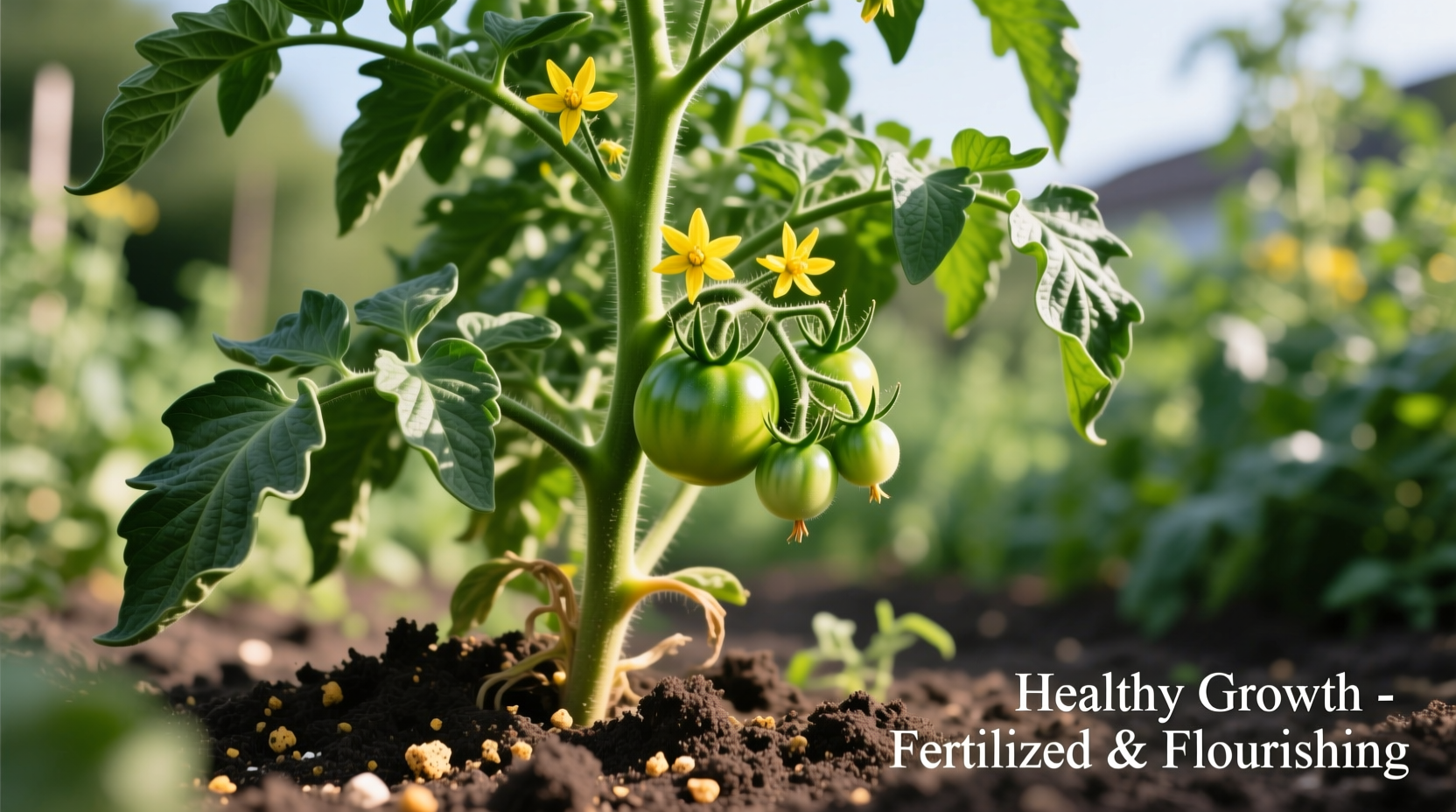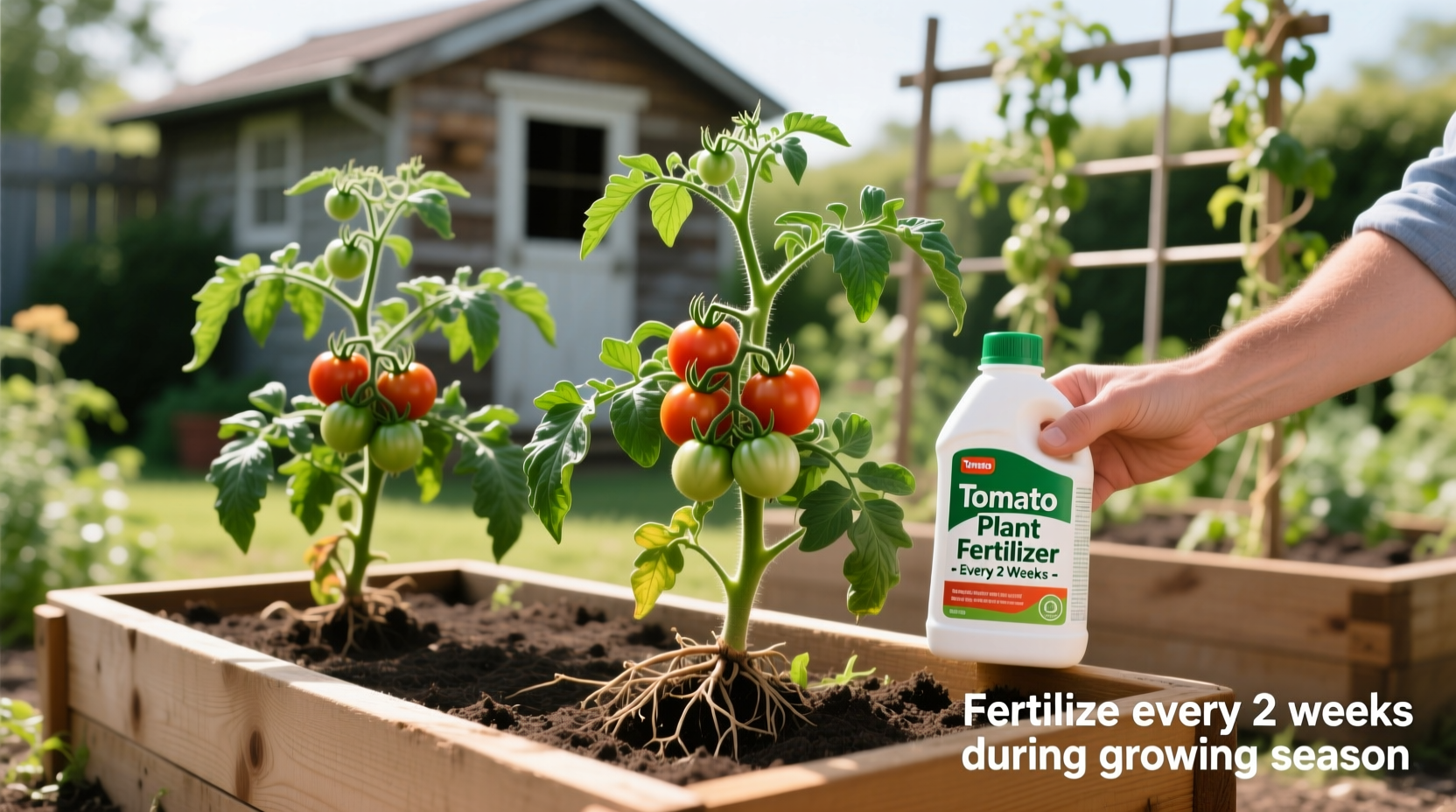Getting your tomato fertilization schedule right transforms your harvest from disappointing to abundant. Whether you're growing cherry tomatoes in containers or beefsteaks in garden beds, understanding the precise nutrient timing makes the difference between mediocre and exceptional fruit production. This guide delivers science-backed fertilization schedules you can implement immediately, with clear indicators for adjusting based on your specific growing conditions.
Why Fertilization Timing Matters for Tomato Success
Tomatoes are heavy feeders that require specific nutrients at critical growth stages. Research from the University of Minnesota Extension shows properly timed fertilization increases yield by 30-50% compared to irregular feeding. The key is matching nutrient application to your plants' developmental needs rather than following a rigid calendar.
Your Step-by-Step Tomato Fertilization Timeline
| Growth Stage | Timeline After Planting | Fertilizer Type | Application Frequency |
|---|---|---|---|
| Transplant Establishment | 0-2 weeks | Rooting formula (high phosphorus) | At planting only |
| Vegatative Growth | 2-5 weeks | Balanced formula (10-10-10) | Every 7-10 days |
| Flowering Start | 5-7 weeks | Low-nitrogen, high-potassium (5-10-10) | Every 10-14 days |
| Fruit Development | 7+ weeks | Potassium-focused (0-5-10) | Every 14 days |
Adjusting Frequency Based on Your Growing Conditions
Your ideal fertilization schedule isn't one-size-fits-all. Consider these critical factors that affect how often to fertilize tomato plants in containers versus garden beds:
- Container gardening: Potted tomatoes need feeding every 5-7 days as nutrients leach out faster. University studies show container plants require 20-30% more frequent fertilization than in-ground plants.
- Soil type: Sandy soils drain quickly, requiring more frequent but lighter applications. Clay soils retain nutrients longer, allowing for less frequent feeding.
- Rainfall patterns: Heavy rains wash away nutrients - increase frequency after significant rainfall events.
- Organic vs. synthetic: Organic fertilizers release nutrients slowly, typically requiring applications every 2-3 weeks versus weekly for synthetics.

Recognizing When to Adjust Your Fertilization Schedule
Watch for these visual indicators that signal you need to change how frequently you fertilize tomato plants:
Signs You're Under-Fertilizing
- Pale or yellowing leaves (especially older leaves)
- Stunted growth and small leaves
- Poor flowering and fruit set
- Purple discoloration on undersides of leaves (phosphorus deficiency)
Signs You're Over-Fertilizing
- Excessive leafy growth with few flowers
- Burned leaf edges (fertilizer burn)
- Cracked fruit and blossom end rot
- White crust on soil surface (salt buildup)
Best Practices for Maximum Tomato Nutrition
Follow these research-backed techniques to optimize your tomato plant fertilization frequency and method:
- Water before fertilizing: Always moisten soil first to prevent root burn, as recommended by Oregon State University Extension.
- Side-dress properly: Apply fertilizer 6 inches from stem and water in thoroughly.
- Morning application: Fertilize early in the day when plants are most receptive.
- Stop feeding late: Cease fertilization 3-4 weeks before first expected frost to encourage ripening.
Organic Fertilization Schedule for Home Gardeners
For those using organic methods to fertilize tomato plants, follow this modified schedule:
- At planting: Mix 1 cup composted manure per plant into planting hole
- 3 weeks after transplanting: Apply fish emulsion (1-2-1 ratio) every 10-14 days
- When first flowers appear: Switch to kelp meal or seaweed extract every 14 days
- During fruiting: Add calcium-rich amendments like crushed eggshells to prevent blossom end rot
According to Cornell University's vegetable program, organic fertilizers require more frequent soil testing but produce tomatoes with superior flavor compounds compared to synthetic options.
Troubleshooting Common Fertilization Problems
Address these frequent issues with targeted solutions:
Yellowing Leaves Despite Regular Feeding
This often indicates iron deficiency rather than nitrogen shortage. Apply chelated iron foliar spray and check soil pH - tomatoes need slightly acidic soil (6.2-6.8) for optimal nutrient uptake. The Penn State Extension confirms pH imbalance affects 70% of nutrient absorption issues.
Poor Fruit Set with Healthy Plants
Excessive nitrogen causes lush foliage but few tomatoes. Immediately switch to a low-nitrogen, high-phosphorus formula and reduce frequency to every 14 days. Research shows this adjustment typically improves fruit set within 2-3 weeks.
Final Fertilization Checklist for Abundant Tomatoes
Before your next feeding session, verify these critical points:
- Soil is moist (never fertilize dry soil)
- Plants show active growth (not stressed by heat or drought)
- You've identified current growth stage accurately
- Fertilizer ratio matches growth stage requirements
- You're applying at the correct distance from plant stem











 浙公网安备
33010002000092号
浙公网安备
33010002000092号 浙B2-20120091-4
浙B2-20120091-4